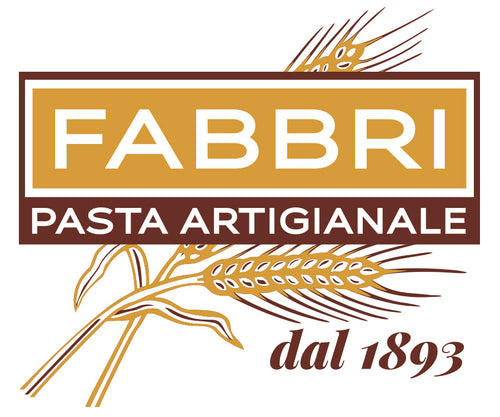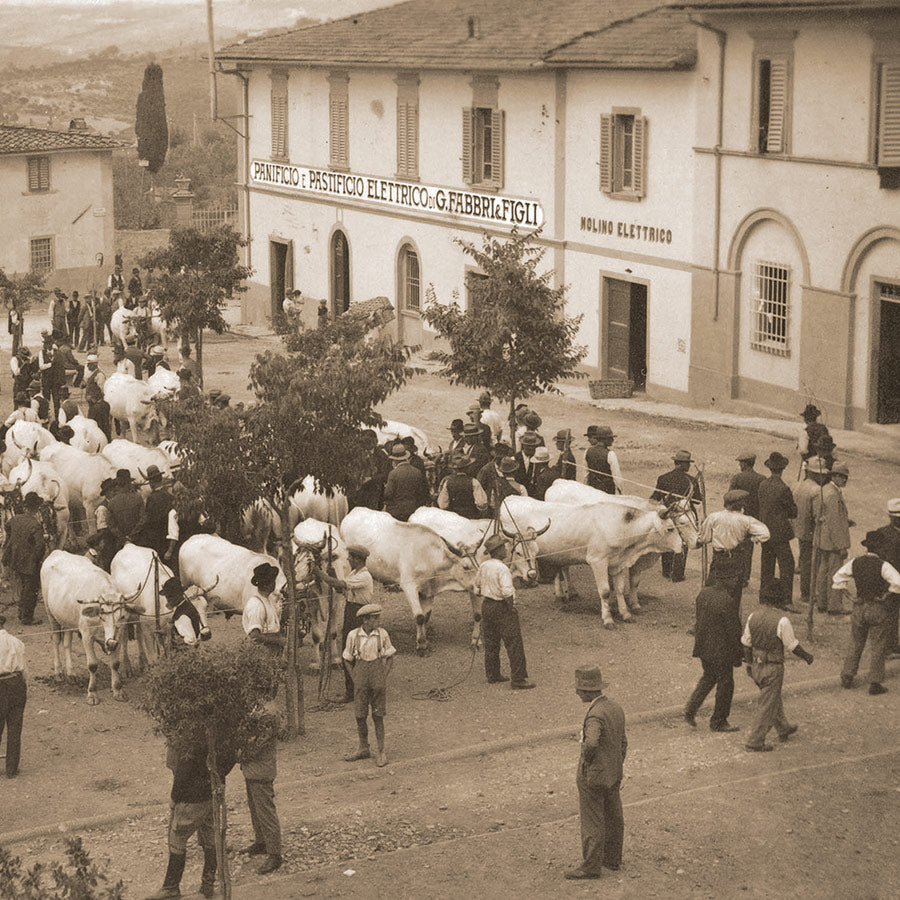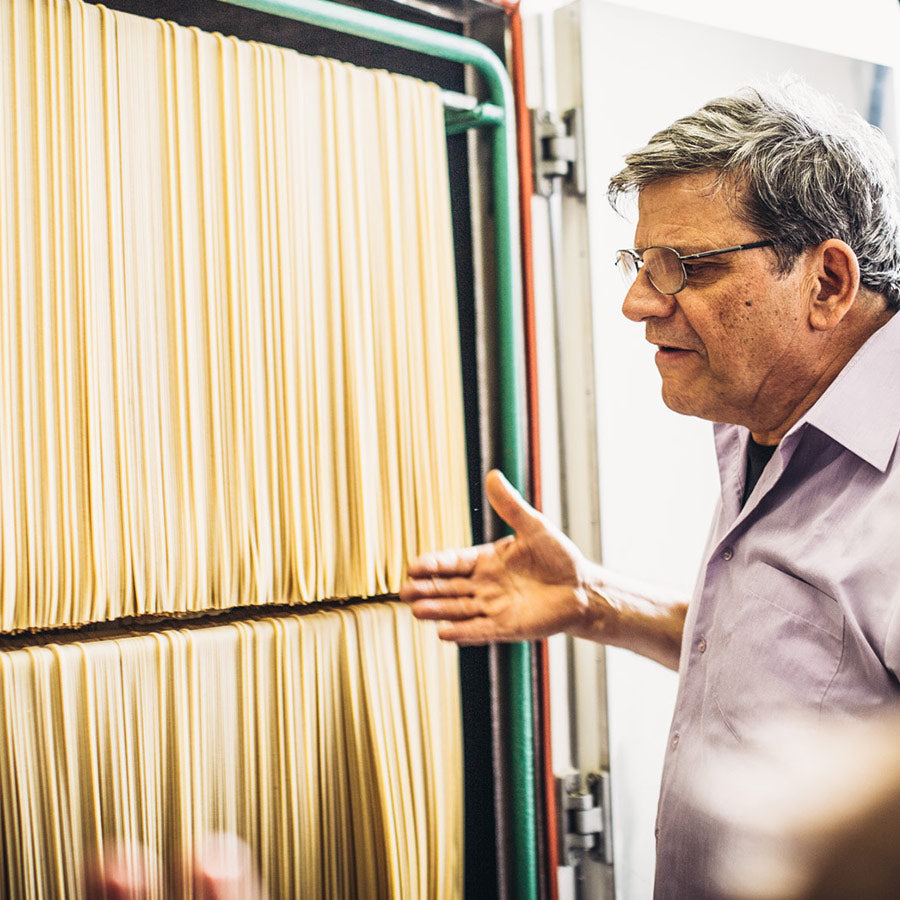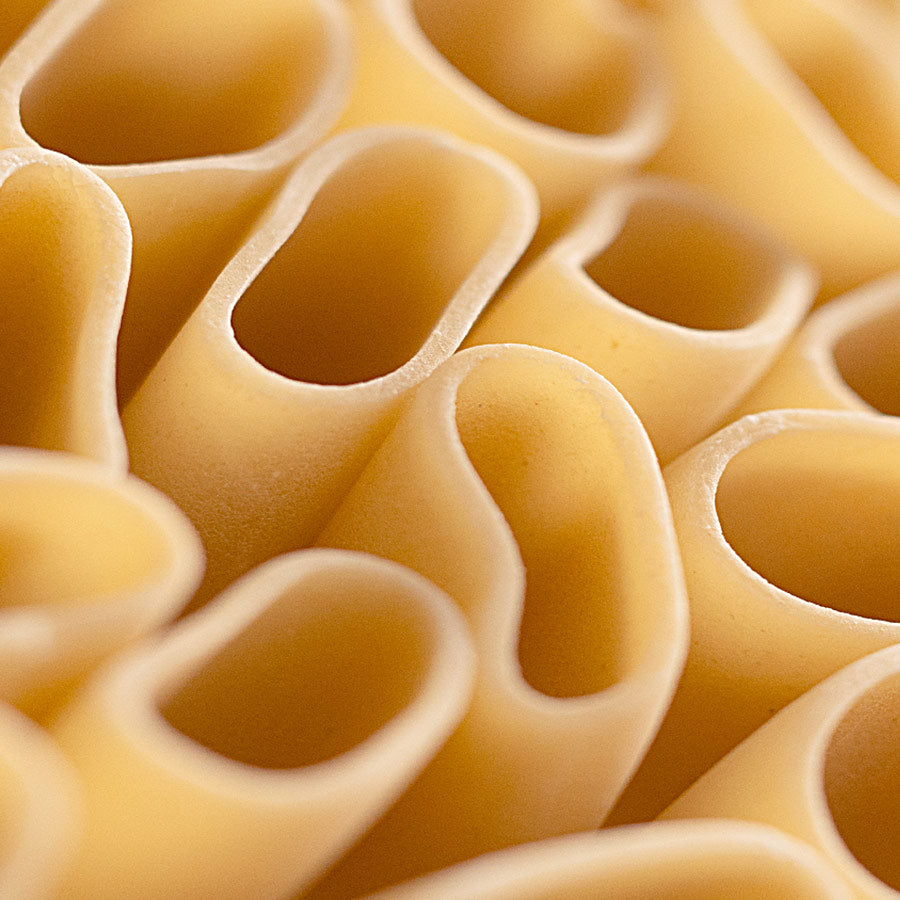When Pasta Speaks with Wine – a story by Triple A

A plate of pasta and a glass of wine: two everyday gestures, one single artisanal soul.
In the story of Triple A, the hands that knead dough and the hands that harvest grapes intertwine, united by the same respect for the land, for time, and for tradition.
Enjoy the read.*
"A glass of wine and a plate of pasta on a table, a red and white checkered tablecloth, the chirping of cicadas in the air. But even without falling into clichés, just a full glass beside a steaming plate of pasta on the table evokes the idea of home. These two foods, in fact, unconsciously represent the symbols of Italian culture. Not just gastronomic culture but also everyday life. 'Call me when you’re almost done so I can put the pasta in' is one of the most powerful expressions of love we can receive. This expression is complemented by the care of keeping the guest’s glass full of wine.
A familiar lexicon spoken at the table by an entire nation through a series of small, silent gestures.
In the gestures of these foods, there was also the preparation—slow, repeated movements by artisans and farmers, actions repeated even at home, which spoke of a time when what ended up on our tables came from someone we had shaken hands with and looked in the eye. Not only in the countryside but also in the city, like for the wine that gave us the opportunity to escape to the countryside and fill the trunk with the farmer’s wine. Thus, Grandpa’s cellar was squeezed among the objects accumulated over a lifetime, the small bike with training wheels on which we had scraped our knees was moved to the back to make room for demijohns, bottles, and corks. Always supervised by the calendar hanging on the wall that remembered the saints and lunar phases.
Giovanni has dark, deep eyes, large hands, and the confidence of someone who knows they are on the right path. Giovanni's family within Pastificio Fabbri has been repeating the same gestures for four generations. He started working as a pasta maker at sixteen, inheriting savoir-faire from the family that has owned the pasta factory in Strada in Chianti since 1893. The sirens of industry have not been heard here, and so the old 'Cantini' press remains in the same place where Grandpa Renzo set it up in 1958, continuing to handle the mixing, kneading, and extrusion of the pasta. When asked what makes his pasta different, Giovanni says he hasn’t changed anything; they’ve always done it this way. The same calm, the same confidence, and the same deep gaze can also be found in conversations with old farmers and winemakers. Ask them why they haven’t changed the way they make their wine. An embarrassed smile, almost as if trying to justify themselves, while they shrug and exclaim, 'My father and grandfather always did it this way, I learned from them.'
The artisan world is one of personal and generational research to find the best raw materials. Just as the winemaker knows and cares for their grapes, so too does the grain become fundamental for producing pasta that reflects the same craftsmanship. While in the wine world, the winemaker has the fortune and burden of following every step of production from planting a vine cutting to bottling, in the food artisan world, there is reliance on a network of trusted colleagues: farmers who grow the grain, even ancient varieties, without pesticides and practicing crop rotation to keep the soil fertile; mills that grind the grains delicately, slowly and consistently, so as not to strip them of fibers, vitamins, and minerals, and return the flour to the pasta factory. A network of artisans who, in their sector, repeat the same perfected gestures, mechanisms of the same machine to put on our tables every day pasta with the best nutritional qualities.
But not only the quality of the raw materials, in wine as in pasta, is a fundamental factor: they are joined by the method of processing and time. At Pastificio Fabbri, they continue to work according to the grandparents' teachings: during pasta making, temperatures do not exceed 38°C, and drying follows a rhythm that would make the industry pale, between three and six days depending on the format.
Observation is another factor that matters greatly to those who care for the vineyard, observing to understand the nature around us, observing to foresee. Giovanni has also taught his son Marco, the fifth generation of Pastificio Fabbri, this concept. Observation in the pasta factory is used to adjust the drying time of the pasta based on the seasons because in craftsmanship, rules and standardization of procedures should not find a place. Through all these attentions, we see that the artisans of Triple "A" speak the same language as Artisan Farmers Artists, like the winemaker who each morning walks among the rows, tastes a grape, and checks the ripeness of the grapes to understand when to harvest, bringing the grapes to the cellar at the right moment and making wine while valuing the teachings received from those who harvested the wine before him. The patience of those who understand the mysteries, whims, and needs of a grape and a territory and who accommodate the wine in the cellar for as long as it needs.
To look at them, they might just seem like a plate of pasta and a glass of wine, but intrinsically, this plate and this glass still speak of home, traditions, and roots, but above all, of love for one’s work, one’s land, and one’s neighbor. And when the plate and the glass lack quality, respect for raw materials, and time, it is felt and seen."
*If you’d like to learn more about Triple A’s work and explore their selection of winemakers, you can visit their official website here.















